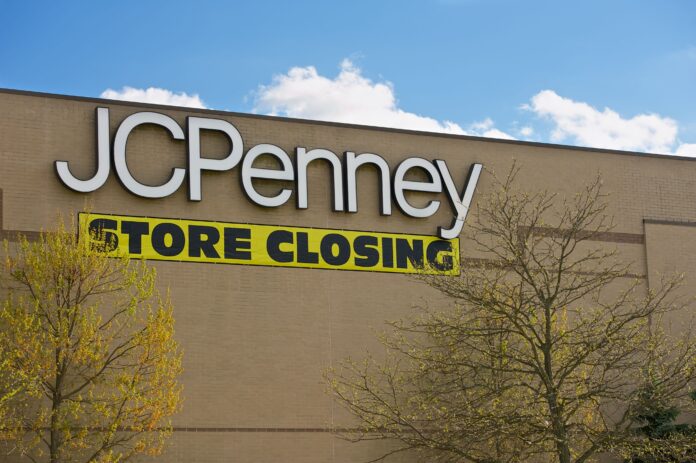JCPenney, a formerly glorious American departmental store chain, added sorry news to the retail scene as the department store announced plans to shut down several of its locations in the United States. In a recent announcement from the company, approximately eight JCPenney stores will be closed down midway this year, affecting states like California, Colorado, Idaho, Kansas, Maryland, North Carolina, New Hampshire, and West Virginia.
The closures don’t relate in any way to the advent of the new merged entity of JCPenney-Spark, which constitutes the new retail power in the US, Catalyst Brands. Rather, closures are part of the trend of the retail world’s move to shutting locations as many traditional brick-and-mortar stores become obsolete in the changing consumer habits and the emergence of e-purchasing.
Reasons Behind the Store Closures
JCPenney has given several reasons as to why the specific locations would be closed. The simplest reasons as to why the stores are closing:
Leasing Expiry: The stores have lease agreements that will simply end; it would not make much sense at this point for the company to decide to continue with these locations.
Changes in Market: Changes in the consumer’s mindset and the competitive landscape cause demand to fluctuate regarding particular store sites; this, then, requires closing unproductive or less profitable outlets.
Keeping Up with Changing Retail Landscapes: Like most traditional retailers, JCPenney catches up with trends regarding how to beat the odds of e-commerce and changing consumer shopping habits.
These closings are not, however, part of the more significant movement of the rest of the company downsizing. This is more about making JCPenney better for the remaining stores and continuing to move the remaining part of the business forward.
Also read: Dallas Cowboys Hire Ken Dorsey: Game-Changer for Offense
The Communities Face the Impact
When a JCPenney store closes, it can impact local communities greatly, as such stores often anchor shopping malls or local hubs of retail and deliver jobs and revenues to these areas.
It leads to job losses for residents. Decreased foot traffic and revenues lost for neighbor businesses are possible when JCPenney closes. Again, there is a ripple effect on the overall economic situation of the community.
It’s worth noting, however, that the impact of these closures may vary with location and surrounding alternative retailers. Some towns will become creative and find new methods of breathing life into local economies, while others may be left with deeper scars.
The New Face of Retail
The JCPenney store closures serve as just one of the examples evident in the overall shift happening in the retail industry. More and more shoppers are getting drawn to shopping online and are using traditional stores less.
Because of this change in consumer behavior, old retailers need to formulate a new way of doing business and be seen to conform to realities in the market. Some of these have gone the whole hog and are now taking an omnichannel approach toward integrating physical and digital offerings into seamless shopping experiences. Others, instead, focused on creating unique experiences in physical stores to lure customers inside and differentiate themselves from online competition.
And yet, the path forward is not always clear, and most are still struggling with the mix of heavy and light presences. These trends have only been accelerated with COVID-19, putting even more emphasis on the agility expected of retailers with shifting consumer preferences.
Also read: What is the 4% Rule For Retirement? Retirement Savings Simplified
The Future of JCPenney and Brick-and-Mortar Retail
As JCPenney embarks on this journey, the future remains uncertain for the company itself and perhaps for brick-and-mortar retail. Although the recent merger with Catalyst Brands may grant the firm some strategic benefits, it must continue innovating and adapting to remain relevant in this decidedly competitive and rapidly evolving market.
Of course, carrying and combining these attributes will determine the future for JCPenney and other traditional retailers as follows:
Adopting Omnichannel: Forming paths that make it easy for customers to understand how to join on either side of the process is important; therefore, stores must couple their bricks and clicks offerings.
Building Unique In-Store Experiences? These need to be the type of experiences that consumers cannot access online: bespoke service, interactive displays, events to which you must come to play or enjoy; a little bit like micro-Disney.
Developing the next level of personalization-based experiences: Data-based and analytical strength is required for retailers to develop a clear understanding of their customers and streamline their operations to allow for informed decision-making about store footprint and product offerings.
Adapting to Changing Consumer Preferences: To stay successful retail outlets must be flexible enough to respond to changes brought about by a shift in the way people shop, demand for sustainable options, and heightened need for customized experiences.
If these issues build evidence, then JCPenney and other traditional retailers may find a way through changing landscapes of retail. It wouldn’t be easy, nor could it be without its great share of challenges, but then opportunities lie ahead.
The coming of JCPenney stores becomes a reminder that indeed retail is changing, so much. With the change in the shopping habits of consumers, traditional brick-and-mortar stores like JCPenney will have to evolve and adapt to the changing realities of e-commerce.








